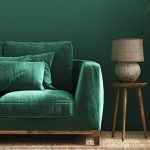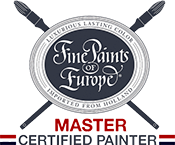A Guide to Choosing the Perfect Paint Finish for Your Home
December 27, 2023

After months of living in a new apartment or home, you’ve been meaning to paint your walls to bring a little more character into your living space. Perhaps you’re looking for durable paint selections because you plan to stay long-term, or maybe you want the right color to boost a room’s character.
The paint you choose for your walls can make all the difference in how your residence looks and feels. The durability and protection that different paints offer are also important factors when choosing the right color and finish for your home.
For the basics, the higher the sheen of the paint finish, the higher the shine and ability to reflect light. Flat and matte paints offer no light reflectivity, while semi-gloss and high-gloss paints reflect light, giving them a slight shine. Depending on what you decide will suit your room, several finish options can offer the perfect sheen to fit your style preferences.
Take a look at the following types of paint finishes and how to choose the best one for your home.
Considerations for Types of Paint Finishes
While picking the color of your paint might seem like the most important task when planning how the room will look overall, choosing the right sheen is just as critical. The gloss in each determines how the color appears to the naked eye, the paint’s durability and the ability to hide imperfections.
Before selecting a sheen based on appearance, you can also consider the following factors in your home:
- Type of room: Bathroom and kitchen cabinet and wall paint applications are susceptible to water, humidity, soap and even grease from cooking. Picking a finish that protects your walls from these elements is essential.
- Foot traffic: Walking in and out of rooms consistently for years can impact the shine of your walls without a highly durable paint finish.
- The texture of the walls: Depending on which route you go, your wall’s texture might interfere with the paint application. The flatter the finish you select, the more the paint will hide the imperfections and nuances of the wall’s texture. For cracking walls, picking a flat or matte finish might be the best choice.
- Natural light and room size: When selecting a sheen, consider how much natural light comes into a room and the feeling you want to convey visually. The low reflectivity of flat finishes can help give the appearance of a wall receding, while the higher-gloss finishes will allow more light to bounce across the room.
- Uses for the room: When it comes to the room’s purpose, it’s important to choose the right paint finish for more practical applications, such as normal wear and tear, and consider how easily it will be to clean. For a wall that’s easiest to clean, go for the higher sheen.
Using the guide below, you can find out the specific nature of flat and matte, eggshell, satin, low-gloss and high-gloss paints and where they work best. Picking the option best suited to your rooms can ensure the longevity of the paint while maintaining the aesthetic you desire for your home.
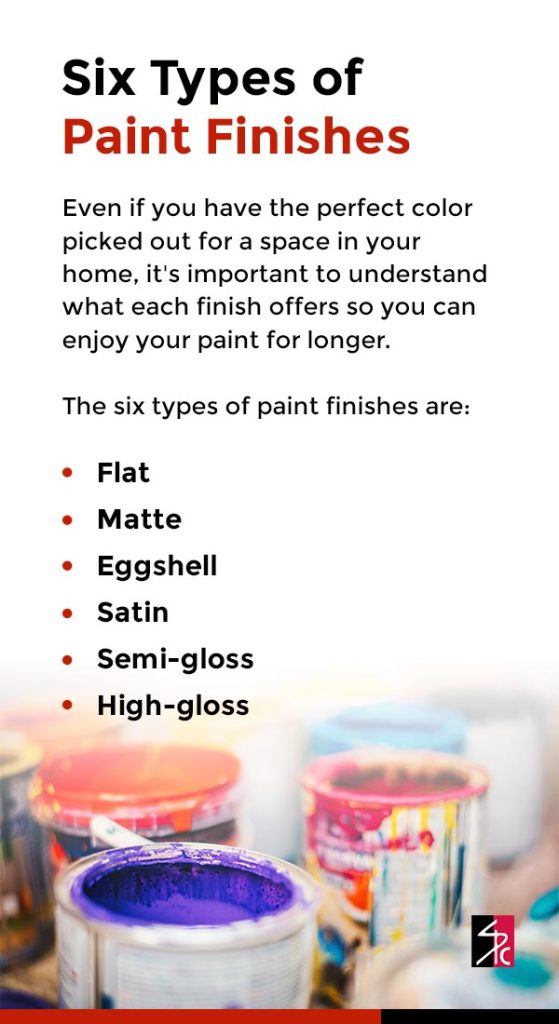
Six Types of Paint Finishes
Even if you have the perfect color picked out for a space in your home, it’s important to understand what each finish offers so you can enjoy your paint for longer.
The six types of paint finishes are:
- Flat: Much like the name would suggest, flat finishes do not have any shine. This finish does not reflect light, which makes it an excellent paint finish for hiding imperfections in the wall or ceiling. Flat finishes are perfect for rooms with minimal foot traffic.
- Matte: Similar to flat, matte has a low shine due to minimal reflectivity. Matte finishes are fairly durable and great for rooms with some regular foot traffic.
- Eggshell: For a durable finish that offers a delicate look, eggshell is your go-to choice. This finish offers the same no-shine properties as flat and matte with a little bit of luster that resembles the texture of eggshells. Enjoy a unique finish that works well in rooms with medium foot traffic.
- Satin: Satin finishes provide a bit of shine to your favorite colors as well as a velvety touch to your walls. Satin has a pearl-like appearance that pairs well with rooms with high foot traffic and moisture, such as bathrooms and kitchens.
- Semi-gloss: More shine and high durability make semi-gloss finishes a favorite among homeowners. These sleek paint options are perfect for rooms with high moisture or other rooms in the home that experience the most use.
- High-gloss: If you want a glass-like appearance, look no further than high-gloss paint. This finish is excellent for painting around doors and cabinets that household members use daily. High-gloss offers the highest durability so you can enjoy your favorite colors for the long term.
Flat vs. Matte Paint
Both flat and matte paint finishes have little shine at all. Both are excellent paint sheens for areas of the home that will not see a lot of dirt or foot traffic. The difference between flat and matte finishes is so minute that they are largely interchangeable. However, flat paint finishes have a slightly lower gloss appearance than matte.
When Should You Use Matte Paint?
If you have pets or children, you may want to avoid a flat finish on the walls as it is the most difficult to clean. However, the nature of the paint sheen is to soak up the light, providing no reflectivity. This feature allows you to hide imperfections in your walls. Because they have more pigment, they take less work to cover and are the most economical selection for covering large spaces in the home.
For those who do not wish to cover the cost of a more expensive sheen, matte finishes offer the most cost-effective solution to bring that perfect aesthetic to your home.
Where Should You Use Matte Paint?
Matte finishes are best suited for areas such as ceilings, bedrooms and dining rooms that do not see a lot of traffic or dirt. In addition, the flat finish hides imperfections and damage to walls, making it ideal for patched drywall with joint compound or new drywall installations with imperfect taping.
Eggshell Paint
Like matte, eggshell paint is a lower-reflectivity sheen and can be used for similar applications while still providing the same elegant, smooth shine. It’s easier to clean and slightly more durable than flat finishes. However, they are not as durable as high-light reflectivity finishes, such as satin, semi-gloss or high-gloss paints.
When Should You Use Eggshell Paint?
Like a flat finish, eggshell is best utilized for areas with low traffic and not susceptible to dirt. In addition, if you have pets or children, cleaning is not as easy with eggshell paint. If you plan on using an eggshell finish, consider the texture of your walls. Because of the lower reflectivity, eggshell offers a better ability to hide imperfections on your walls.
Where Should You Use Eggshell Paint?
Ideally, eggshell paint is best suited for ceilings, bedrooms, dining rooms and living areas where there is not a lot of dirt build-up or traffic. In addition, its medium-level durability provides added protection that a flat finish does not. For areas such as walls, eggshell works best and is easier to clean. It would not be suited for a kitchen or bathroom space.
Satin Paint
Occasionally, satin paint finishes fall into the same category as eggshell because of their slight luster, but they are slightly more durable and have a higher sheen than eggshell finishes. Since they are more durable and easier to clean, they are a perfect middle ground, offering a slight glow on walls while providing many of the same benefits of eggshell and matte finishes.
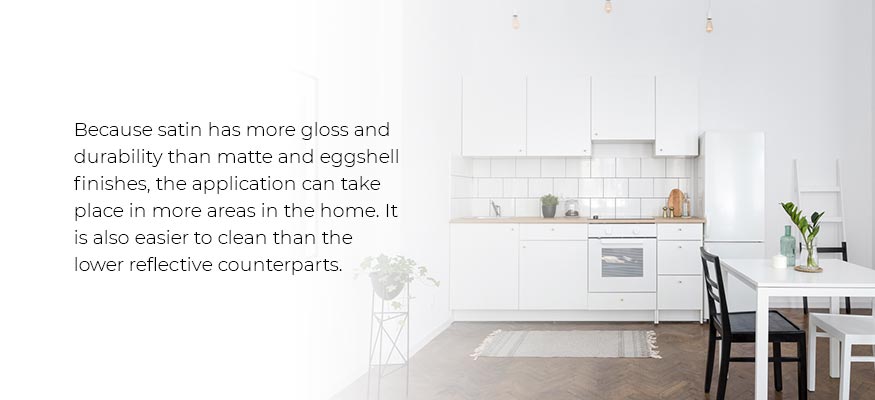
When Should You Use Satin Paint?
Because satin has more gloss and durability than matte and eggshell finishes, the application can take place in more areas in the home. It is also easier to clean than the lower reflective counterparts. It is ideal for more active rooms in the house and can even be used outdoors due to its higher durability. Consider the room where the satin paint will go. Unlike eggshell or matte paints, satin does not hide imperfections and can show an uneven application.
Where Should You Use Satin Paint?
Because of their higher durability, satin paints are easier to clean and can make any room glow with a beautiful, elegant sheen. The durability and longevity of satin paints make them perfect for many high-traffic rooms in the home, such as:
- Hallways
- Foyers
- Guest bathrooms
- Window and door trims
- Shutters
- Family rooms
- Children’s bedrooms
- Kitchens
- Laundry areas
What Is Low-Gloss or Semi-Gloss Paint
While satin has more light reflectivity than matte or eggshell finishes, low-gloss or semi-gloss paints have a glossier sheen, making them highly durable and easy to clean. Even though they are reflective, they still don’t offer the reflectivity of a high-gloss application.
When Should You Use Low-Gloss Paint?
If you are having trouble deciding if low-gloss paint is right for you, consider the walls’ texture and the room’s purpose. Low-gloss finishes are highly durable and ideally suited to high-traffic areas of the home. They also provide better resistance to stains and damage. However, because of their higher reflectivity, you will be unable to hide imperfections in the wall.
Where Should You Use Low-Gloss Paint?
Due to their higher durability, low-gloss paints can work well indoors and outdoors. Low-gloss is ideal in various spaces, including:
- Doors
- Molding
- Dining Rooms
- Cabinets
- Hallways
- Trim work
- Kitchens
- Bathrooms
- Windows
They are also ideally suited to areas that experience water, soap, dirt or grease so you can easily wipe away messes.
Types of High-Gloss Paint
If you’re all about capturing that perfect elegant shine and want the highest durability, then a high-gloss paint finish is the best option for your application. High-gloss paints offer the highest reflectivity and are the easiest to clean compared to semi-gloss, satin, eggshell and matte finishes. One of the major downsides to using high-gloss paints is nearly every imperfection in the wall will be highlighted by the sheen. In addition, areas susceptible to fingerprints should have a high-gloss coat application over any other paint finish.
When Should You Use High-Gloss Paint
High-gloss is perfect for high-traffic areas and rooms in your home that will see constant and heavy use. Achieve the highest durability and longevity through high-gloss finishes. While highly reflective paint might show imperfections in your wall or dirt build-up, cleaning is effortless compared to matte or eggshell finishes.
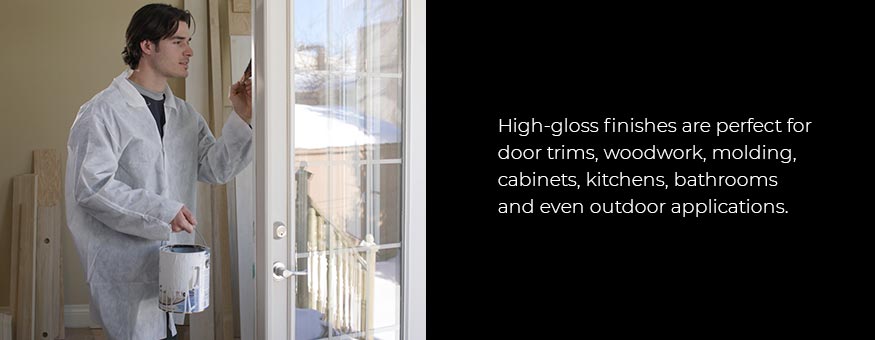
Where Should You Use High-Gloss Paint?
High-gloss finishes are perfect for door trims, woodwork, molding, cabinets, kitchens, bathrooms and even outdoor applications. Since it is the most durable type of paint available, you can also count on the longevity of the application. If you plan on staying in your home for many years, consider the benefits of applying high-gloss paint to high-traffic areas that will see dirt and damage. Due to the highly reflective nature of the paint, hiring a professional to apply it is a better choice, as it is challenging to maintain an even coat. The imperfections of the application will be far more noticeable when compared with flat, eggshell, satin or even semi-gloss finishes.
Comparing the Different Finish Options
Now that you have a better idea of which type of paint finish goes best in certain rooms, let’s see how each one compares to the others. Explore these paint finish comparisons to see which one is best for you and your home.
Difference Between High-Gloss vs. Low-Gloss Paint
High-gloss paint provides more durability and higher reflectivity than low-gloss paint. While many of the same areas of the home are both suited to low-gloss and high-gloss applications, consider the benefits of each and what you’re trying to achieve before selecting a finish. High-gloss finishes might be the best choice for areas like bathrooms and kitchens. However, specific living spaces may call for low-gloss paint, such as hallways, foyers and indoor applications.
Difference Between High-Gloss vs. Eggshell vs. Satin Paint
The most significant differences between high-gloss, eggshell and satin paints are reflectivity, ease of cleaning and durability. With this in mind, high-gloss paints may not work in the same living spaces as eggshell paints. Eggshell paints are best for walls and low-traffic areas of the house because they are harder to clean effectively. Satin is a nice middle ground between high-gloss and eggshell finishes, and might be the best choice if you are trying to determine if the aesthetic is more important than longevity.
Difference Between High-Gloss vs. Matte Paint
The difference between matte and high-gloss finishes is night and day. Matte finishes have no light reflectivity, while high-gloss offers the highest light reflection available regarding sheen. Compared to high-gloss finishes, matte paints are the least durable and the hardest to clean. However, in rooms with little traffic and areas such as ceilings, matte finishes offer an elegant, smooth sheen and are more economical than high-gloss paints.
Imperfections in the walls are no match for matte finishes, which have a very high amount of pigment. Matte finishes offer the best way to hide those imperfections with a fresh coat that covers surfaces easily. High-gloss paints are very reflective and require our professional painters to apply them to specific areas of your home.
Difference Between Satin vs. Semi-Gloss Paint
The main difference between satin and semi-gloss paints is the quality and quantity of sheen in each can. Semi-gloss paints have more of a sheen than a satin paint finish. The extra sheen can change how paint colors look on your wall because a semi-gloss surface will reflect more natural and artificial light.
Additionally, semi-gloss is more durable and easier to clean. Still, satin finishes are more forgiving regarding pre-existing imperfections on your walls. When deciding on the type of paint to choose, it’s important to consider the space it will go in, the light sources and the foot traffic in the room.
Difference Between Eggshell vs. Satin Paint
The difference between eggshell and satin finishes is the texture and appearance. Eggshell offers little to no shine while providing a unique texture similar to real eggshells. In contrast, satin looks like a velvet shine that gives your walls an elegant appearance.
Eggshell is a great paint option for rooms with medium foot traffic, like gathering areas, while satin can withstand more elements such as grease, moisture and heat. Since satin has a higher sheen, this finish offers more durability. Depending on the room, you can decide whether durability is at the top of your priorities.
Request a Consultation Today
With this information about paint finishes and sheens at your fingertips, it’s time to turn your vision into reality. If you live in the New York or Connecticut areas, contact Shoreline Painting to request a consultation for your newest painting project.
Not sure where to start? Explore our completed interior and exterior painting projects for additional inspiration. Our team of professional painters and expert staff is happy to offer guidance on what type of paint sheen to use and much more.
Recent Posts



